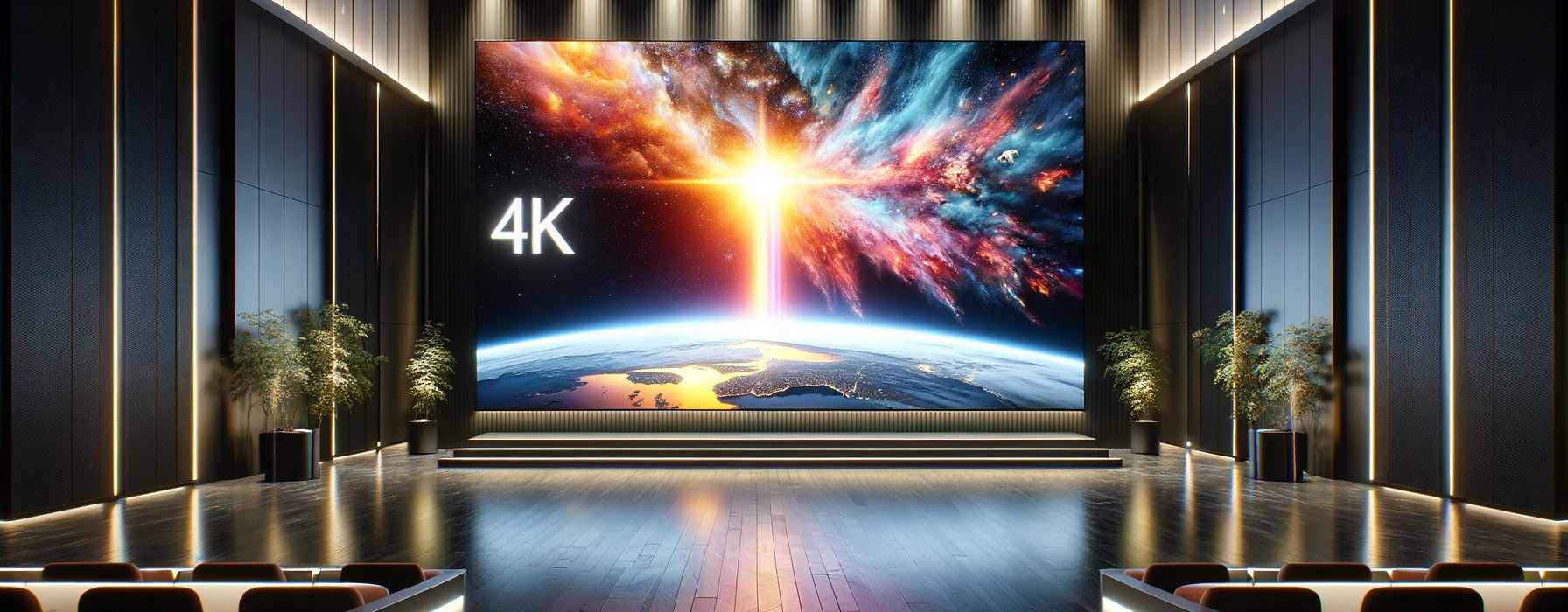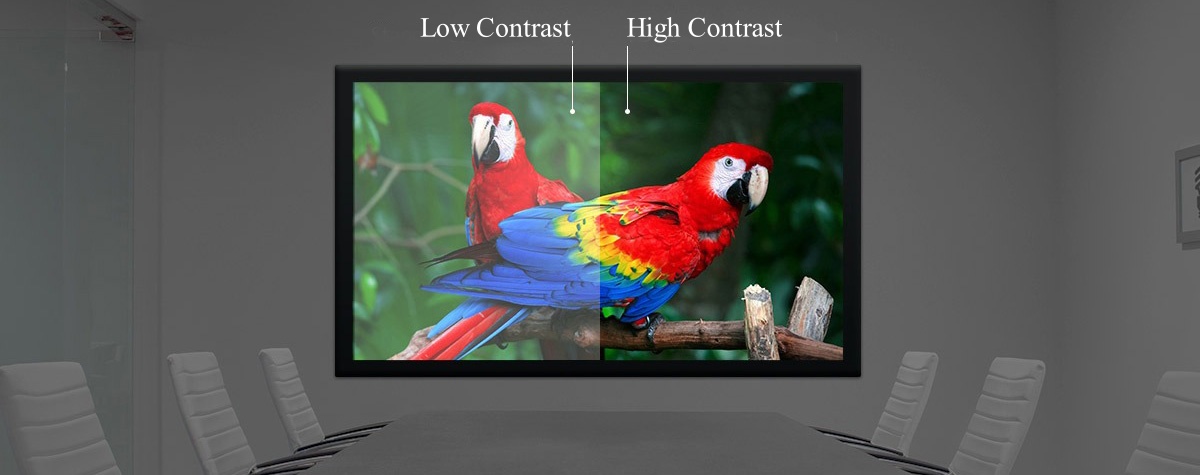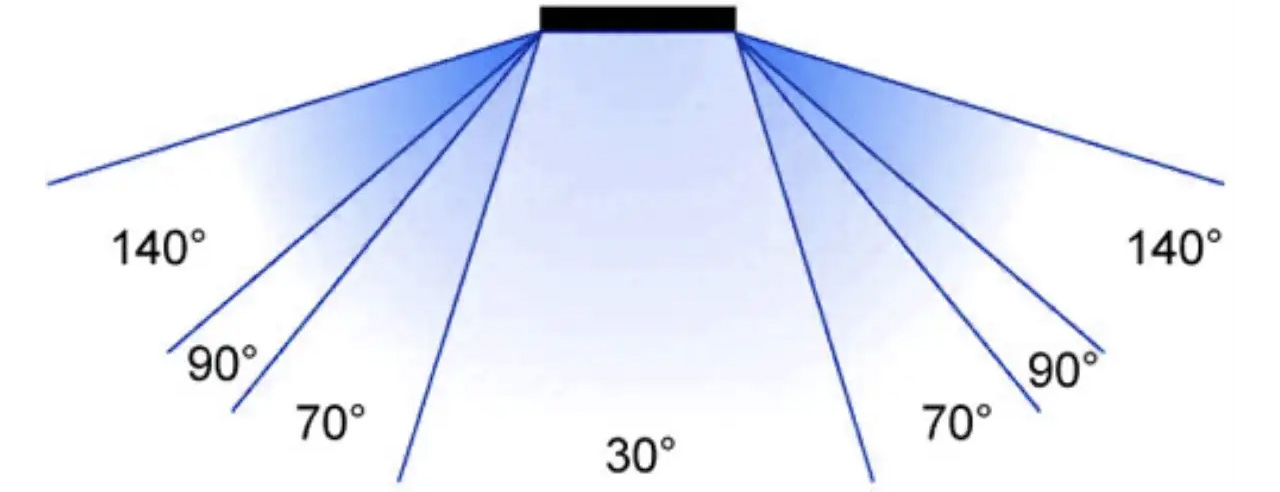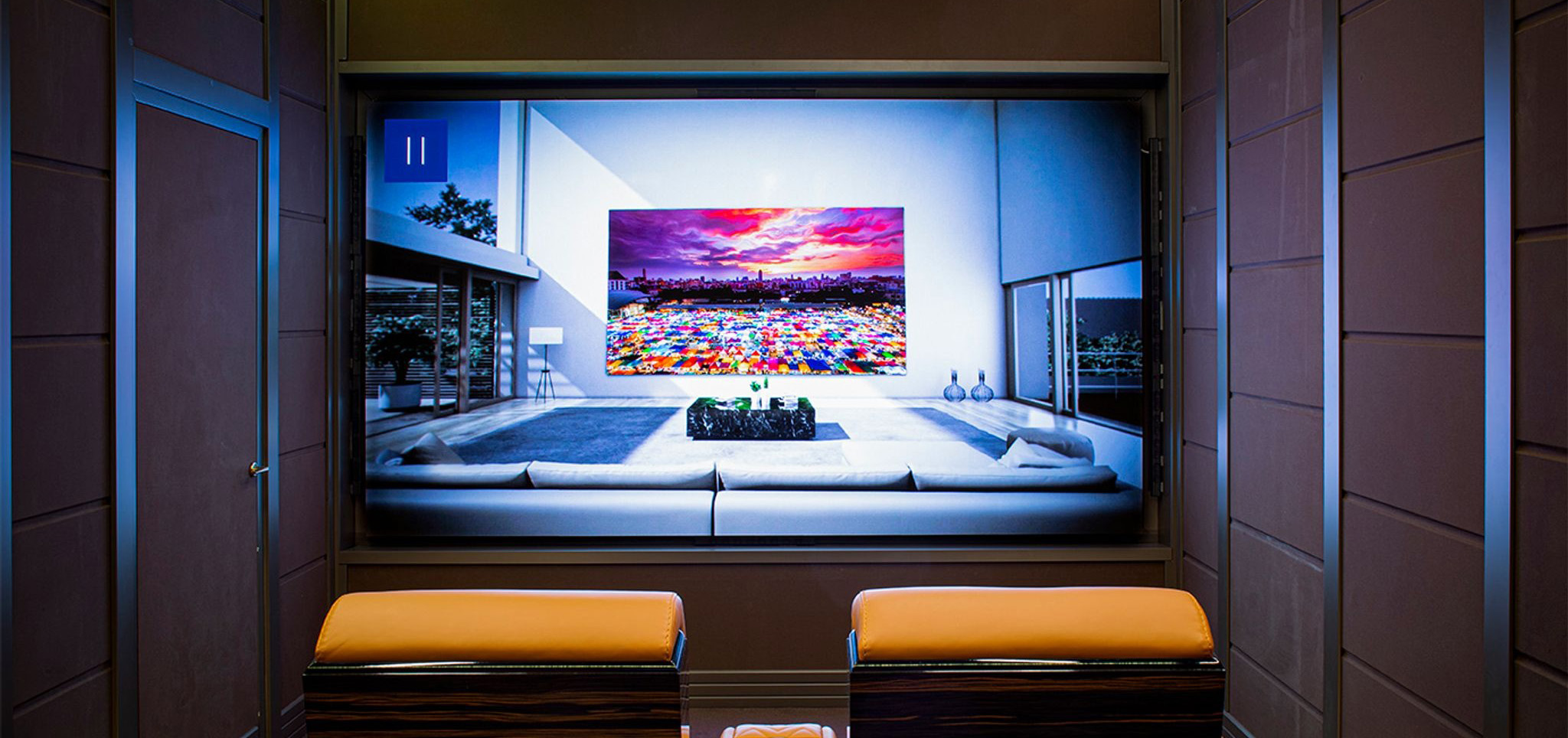
The progress of technology has brought a rich variety of display technologies, and QLED and UHD are among the representatives. What are their unique features? This article will deeply discuss the technical principles, characteristics and application scenarios of QLED vs. UHD. Through detailed comparisons and interpretations, it will help you better understand these two advanced display technologies.
1. What is QLED?
QLED (Quantum Dot Light Emitting Diodes) is made of quantum dots named by physicist Mark Reed of Yale University. Specifically, it refers to extremely tiny semiconductor nanocrystals that are invisible to the naked eye. QLED is a display technology based on quantum dot technology. By adding a layer of quantum dot material between the backlight module and the image module of an LED display, it can improve the color purity of the backlight, making the displayed colors more vivid and delicate. At the same time, it has higher brightness and contrast, providing viewers with a better visual experience.

2. What is UHD?
The full name of UHD is Ultra High Definition. UHD is the next-generation technology of HD (High Definition) and Full HD (Full High Definition). It usually refers to a video display format with a resolution of 3840×2160 (4K) or 7680×4320 (8K). If we compare HD (High Definition) to the picture quality of an ordinary movie, FHD (Full High Definition) is like an upgraded version of high-definition movies. Then UHD is like high-definition movie picture quality four times that of FHD. It’s like enlarging a high-definition picture to four times its size and still maintaining clear and delicate image quality. The core of UHD is to provide users with clearer and more delicate image and video display effects by increasing the number of pixels and resolution.

3. UHD vs QLED: Which is Better?
3.1 In terms of display effect
3.1.1 Color performance
QLED: It has extremely excellent color performance. Quantum dots can emit light with very high purity and achieve high color gamut coverage. In theory, it can reach 140% NTSC color gamut, which is much higher than traditional LCD display technology. Moreover, the color accuracy is also very high, and it can present more vivid and realistic colors.
UHD: In itself, it is only a resolution standard, and the improvement of color is not its main feature. However, display devices that support UHD resolution usually combine some advanced color technologies, such as HDR (High Dynamic Range), to further enhance the color expression, but generally speaking, its color gamut range is still not as good as that of QLED.
3.1.2 Contrast
QLED: Similar to OLED, QLED performs excellently in terms of contrast. Because it can achieve the switching of individual pixels through precise control. When displaying black, the pixels can be completely turned off, presenting a very deep black, forming a sharp contrast with the bright parts and making the picture have a stronger sense of layering and three-dimensionality.
UHD: From a resolution perspective alone, highresolution UHD can make the details of the picture clearer and to a certain extent also help improve the perception of contrast. But this depends on the specific display device and technology. Some ordinary UHD devices may not perform outstandingly in contrast, while high end UHD devices can have better performance only after being equipped with relevant contrast enhancement technologies.

3.2 Brightness performance
QLED: It can achieve a relatively high brightness level. After being excited, the quantum dot material can emit relatively strong light, which makes QLED display devices still maintain good visual effects in bright environments. And when displaying some high-light scenes, it can present a more brilliant picture.
UHD: The brightness performance varies depending on the specific device. Some UHD TVs may have relatively high brightness, but some devices have average brightness performance. However, the characteristic of high resolution enables UHD displays to show more details and layering when displaying high-brightness scenes.
3.3 Viewing angle
QLED: It has good performance in terms of viewing angle. Although it may be slightly inferior to OLED, it can still maintain good color and contrast within a large viewing angle range. Viewers can watch the screen from different angles and obtain a relatively satisfactory visual experience.
UHD: The viewing angle also depends on the specific display technology and device. Some UHD devices that adopt advanced panel technologies have a wide viewing angle, but some devices will have problems such as color distortion and reduced brightness after deviating from the central viewing angle.

3.4 Energy consumption
QLED: The energy consumption is relatively low. Due to the high luminous efficiency of quantum dot materials, lower driving voltage is required at the same brightness. Therefore, compared with some traditional display technologies such as LCD, QLED can save a certain amount of energy.
UHD: The energy consumption level varies depending on the specific display technology and device. If it is a UHD device based on LCD technology, since it needs a backlight to illuminate the screen, the energy consumption is relatively high. If it is a UHD device that adopts self-luminous technology, such as the UHD version of OLED or QLED, the energy consumption is relatively low.
3.5 Lifespan
UHD: The service life of UHD LED display is relatively longer compared to QLED screen. In terms of theoretical life, the theoretical life of UHD LED display can exceed 100,000 hours, which is approximately 11 years if operating continuously 24 hours a day and 365 days a year. Although the theoretical life of the LED light source part of QLED display can also reach more than 100,000 hours.
3.6 Price
QLED: As a relatively advanced display technology, currently the price of QLED devices is relatively high. Especially high-end QLED screens and TVs may be much more expensive than ordinary LCD TVs and LED display screens.
UHD: The prices of UHD devices vary greatly. Some entry-level UHD screen displays are relatively affordable, while high-end UHD displays, especially those with advanced technologies and high-quality panels, will also be relatively expensive. But in general, UHD technology is relatively mature, and the price is more diverse and competitive compared to QLED.
| Feature | UHD Display | QLED Display |
| Resolution | 4K / 8K | 4K / 8K |
| Color Accuracy | Standard | Enhanced with Quantum Dots |
| Brightness | Moderate (up to 500 nits) | High (often >1000 nits) |
| Backlighting | Edge-lit or Full-array | Full-array with Local Dimming |
| HDR Performance | Basic to Moderate (HDR10) | Excellent (HDR10+, Dolby Vision) |
| Viewing Angles | Limited (Panel-dependent) | Improved with QLED technology |
| Refresh Rate | 60Hz – 240Hz | Up to 1920 Hz or higher |
| Contrast Ratio | Standard | Superior with deeper blacks |
| Energy Efficiency | Moderate | More energy-efficient |
| Lifespan | Standard | Longer due to Quantum Dot tech |
| Price | More affordable | Generally higher-priced |
4. UHD versus QLED in Business Use
Outdoor Stage
For stage LED screen, QLED becomes the first choice. QLED’s high resolution enables the audience to clearly see the performance details from a distance. Its high brightness can adapt to outdoor light changes. Whether in strong daylight or at night, it can ensure a clear picture. It can also well display various stage performance contents such as live broadcasts, video clips, and text information.

Indoor Exhibition
Indoor environments have higher requirements for color accuracy and picture quality. QLED has excellent color performance ability. Its color gamut is wide and can accurately restore various colors. Whether it is displaying high-resolution images, videos, or daily office content, it can provide rich and vivid pictures. For example, when displaying high-definition pictures of artworks in an indoor exhibition hall, QLED can truly present the colors of the paintings, making the audience feel as if they are seeing the original. At the same time, QLED’s excellent contrast performance can clearly show the bright and dark details of the picture in an indoor lighting environment, making the picture more layered. Moreover, QLED’s viewing angle in indoor environments can also meet the needs of multiple people watching without color change or significant reduction in brightness when viewed from the side.

Office Meeting Scene
In office meetings, the focus is on displaying clear and accurate documents, data charts, and other contents. UHD’s high resolution can ensure that the text in PPTs, data in tables, and various charts can be clearly presented, avoiding blurriness or indistinctness caused by insufficient resolution. Even when viewed up close on a small conference table, the content can be clearly distinguishable.

Sports Event
Sports event pictures change quickly and are rich in colors, such as the grass color on the playing field and the team uniform colors of athletes. QLED’s excellent color performance can make the audience feel more real and vivid colors. At the same time, its high brightness and high contrast can make fast-moving athletes and balls more prominent, showing good visual effects in dynamic pictures and ensuring that the audience doesn’t miss exciting moments.

5. UHD vs QLED in Personal Use
QLED vs UHD for Gaming
Game pictures are rich in details, especially in large 3D games and open-world games. UHD’s high resolution allows players to see the tiny details in games, such as map textures and character equipment details. Moreover, many game consoles and PC graphics cards now support UHD output, which can fully utilize the advantages of UHD displays and make players better immersed in the game world.
Top Pick: UHD
Home Theater
QLED display provides higher brightness, more vibrant colors, and better contrast, especially when viewing HDR content in bright rooms, showcasing richer details.
Top Pick: QLED

Personal Content Creation
UHD provides a high resolution that allows for displaying more content simultaneously, such as video editing and image editing, with clear effects. If accurate color representation is required, some UHD screens may offer slightly inferior color performance.
QLED offers more precise color accuracy, making it suitable for photo and video editing that requires high color fidelity. Higher brightness levels in QLED displays can reduce eye strain during long working hours.
Therefore, QLED is suitable for professional creation that requires high color fidelity, while UHD is better for multitasking and daily office work.
6. Additional Display Tech: DLED, OLED, Mini LED, and Micro LED

DLED (Direct LED)
DLED is a display technology that uses direct backlighting with an array of LEDs to evenly illuminate the entire screen. Compared to traditional CCFL backlighting, DLED offers higher brightness and lower power consumption. Its advantages lie in its simple structure and lower cost, making it suitable for most everyday use scenarios. It provides a cost-effective display solution with good value for money.
OLED (Organic Light-Emitting Diode)
OLED employs self-emissive technology where each pixel can light up or turn off independently, resulting in exceptional contrast ratios and true blacks. The ultra-thin design and flexibility of OLED make it ideal for creating slim screens and bendable displays. Additionally, OLED excels in color accuracy, making it the preferred choice for premium televisions and mobile devices. Unlike other backlight technologies, OLED does not require additional light sources, offering a more natural viewing experience.
Mini LED
Mini LED technology utilizes thousands to tens of thousands of micro-sized LEDs as the backlight source, enabling finer local dimming zones. This results in performance close to OLED in terms of brightness, contrast, and HDR, while retaining the high-brightness benefits of traditional LED backlit screens. Mini LED also boasts a longer lifespan and lower risk of burn-in. It is the go-to choice for high-brightness settings and professional applications, such as gaming monitors and high-end TVs.
Micro LED
Micro LED represents an emerging display technology that uses micro-sized LED chips as individual pixels. It combines the self-emissive advantages of OLED with solutions to OLED’s lifespan and burn-in issues. Micro LED features extremely high brightness, low power consumption, and supports seamless tiling, making it suitable for large-scale screens and future display applications. Although currently costly, Micro LED signifies the future direction of display technology, particularly for high-end commercial uses and specific ultra-high-definition display requirements.
Overall, each of these four technologies has unique strengths: DLED excels in affordability and practicality, OLED delivers superior image quality, Mini LED balances performance and durability, and Micro LED leads the future of high-end displays.
7. Conclusion
After exploring the characteristics and applications of QLED and UHD, it is clear that both display technologies offer distinct advantages. QLED impresses with its outstanding color performance, high contrast, and suitability for indoor environments where vivid visuals are crucial. On the other hand, UHD shines in outdoor events and stage scenarios with its high resolution and brightness, ensuring clear visibility even from a distance and in varying lighting conditions. When choosing a display technology, it is essential to consider specific needs and usage scenarios.
If you are passionate about displays and looking for the right solution for your requirements, don’t hesitate to contact us. RTLED are here to help you make an informed decision and find the perfect display technology for your needs.
8. Frequently Asked Questions about QLED and UHD
1. Does QLED’s quantum dot fade over time?
Normally, QLED’s quantum dots are stable and don’t fade easily. But in extreme conditions (high temp/humidity/strong light), there might be some impact. Manufacturers are improving to enhance stability.
2. What video sources are needed for UHD high resolution?
High-quality 4K+ sources and formats like H.265/HEVC. Enough transmission bandwidth is also required.
3. How is QLED display’s color accuracy ensured?
By controlling quantum dot size/composition. Advanced color management systems and user adjustments help too.
4. Which fields are UHD monitors good for?
Graphic design, video editing, photography, medical, aerospace. High res and accurate colors are useful.
5. Future trends for QLED and UHD?
QLED: better quantum dots, lower cost, more features. UHD: higher res (8K+), combined with HDR and wide color gamut, used in VR/AR.
Post time: Oct-24-2024

